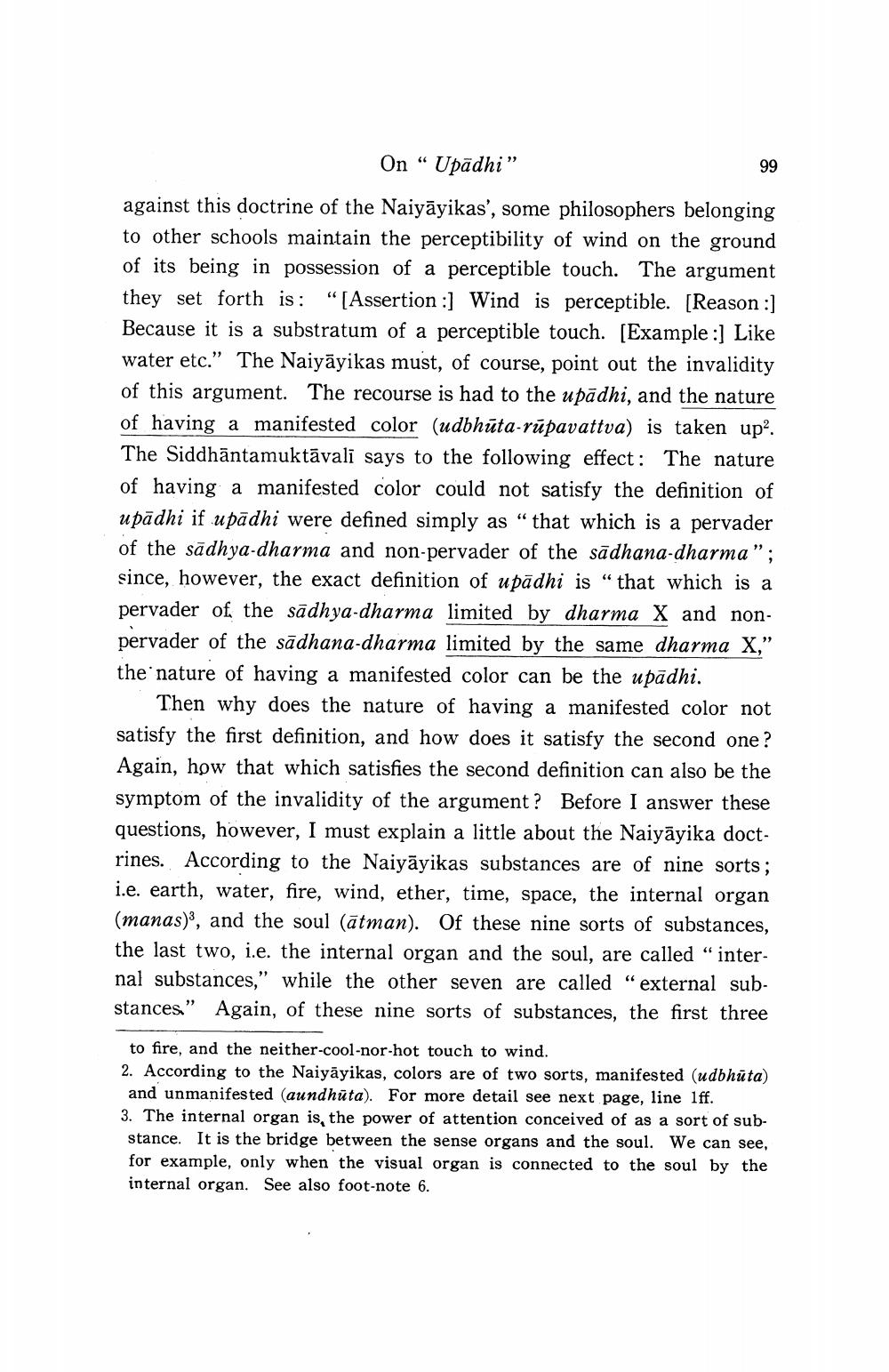________________
On “Upādhi”
99
against this doctrine of the Naiyāyikas', some philosophers belonging to other schools maintain the perceptibility of wind on the ground of its being in possession of a perceptible touch. The argument they set forth is: “[Assertion :] Wind is perceptible. [Reason:] Because it is a substratum of a perceptible touch. (Example :) Like water etc.” The Naiyāyikas must, of course, point out the invalidity of this argument. The recourse is had to the upādhi, and the nature of having a manifested color (udbhūta-rūpavattva) is taken up?. The Siddhāntamuktāvali says to the following effect: The nature of having a manifested color could not satisfy the definition of upādhi if upādhi were defined simply as “ that which is a pervader of the sādhya-dharma and non-pervader of the sādhana-dharma"; since, however, the exact definition of upādhi is "that which is a pervader of the sādhya-dharma limited by dharma X and nonpervader of the sādhana-dharma limited by the same dharma X,” the nature of having a manifested color can be the upādhi.
Then why does the nature of having a manifested color not satisfy the first definition, and how does it satisfy the second one? Again, how that which satisfies the second definition can also be the symptom of the invalidity of the argument? Before I answer these questions, however, I must explain a little about the Naiyāyika doct rines. According to the Naiyāyikas substances are of nine sorts; i.e. earth, water, fire, wind, ether, time, space, the internal organ (manas), and the soul (ātman). Of these nine sorts of substances, the last two, i.e. the internal organ and the soul, are called “internal substances," while the other seven are called "external substances." Again, of these nine sorts of substances, the first three
to fire, and the neither-cool-nor-hot touch to wind. 2. According to the Naiyāyikas, colors are of two sorts, manifested (udbhūta)
and unmanifested (aundhūta). For more detail see next page, line 1ff. 3. The internal organ is, the power of attention conceived of as a sort of substance. It is the bridge between the sense organs and the soul. We can see, for example, only when the visual organ is connected to the soul by the internal organ. See also foot-note 6.




